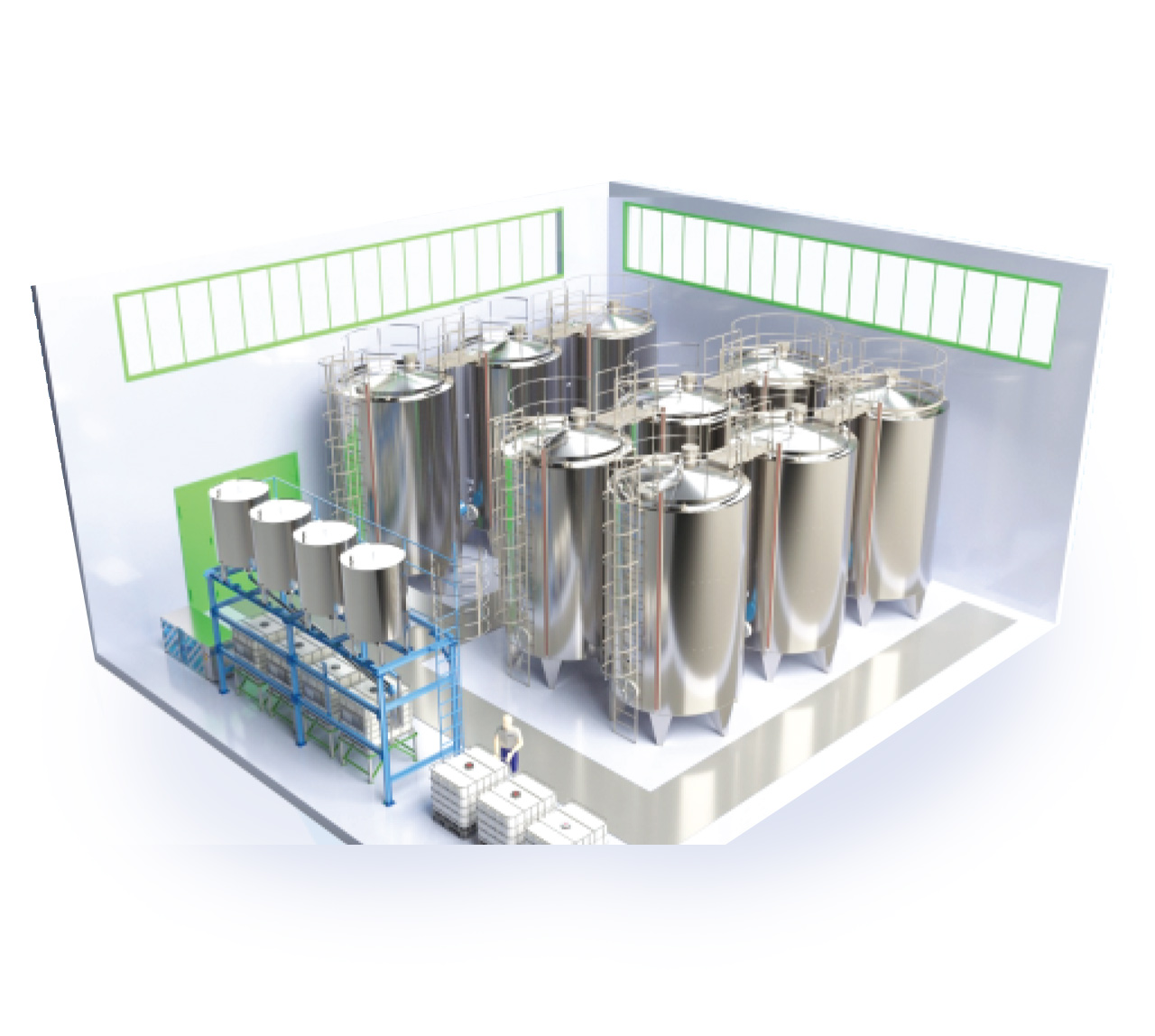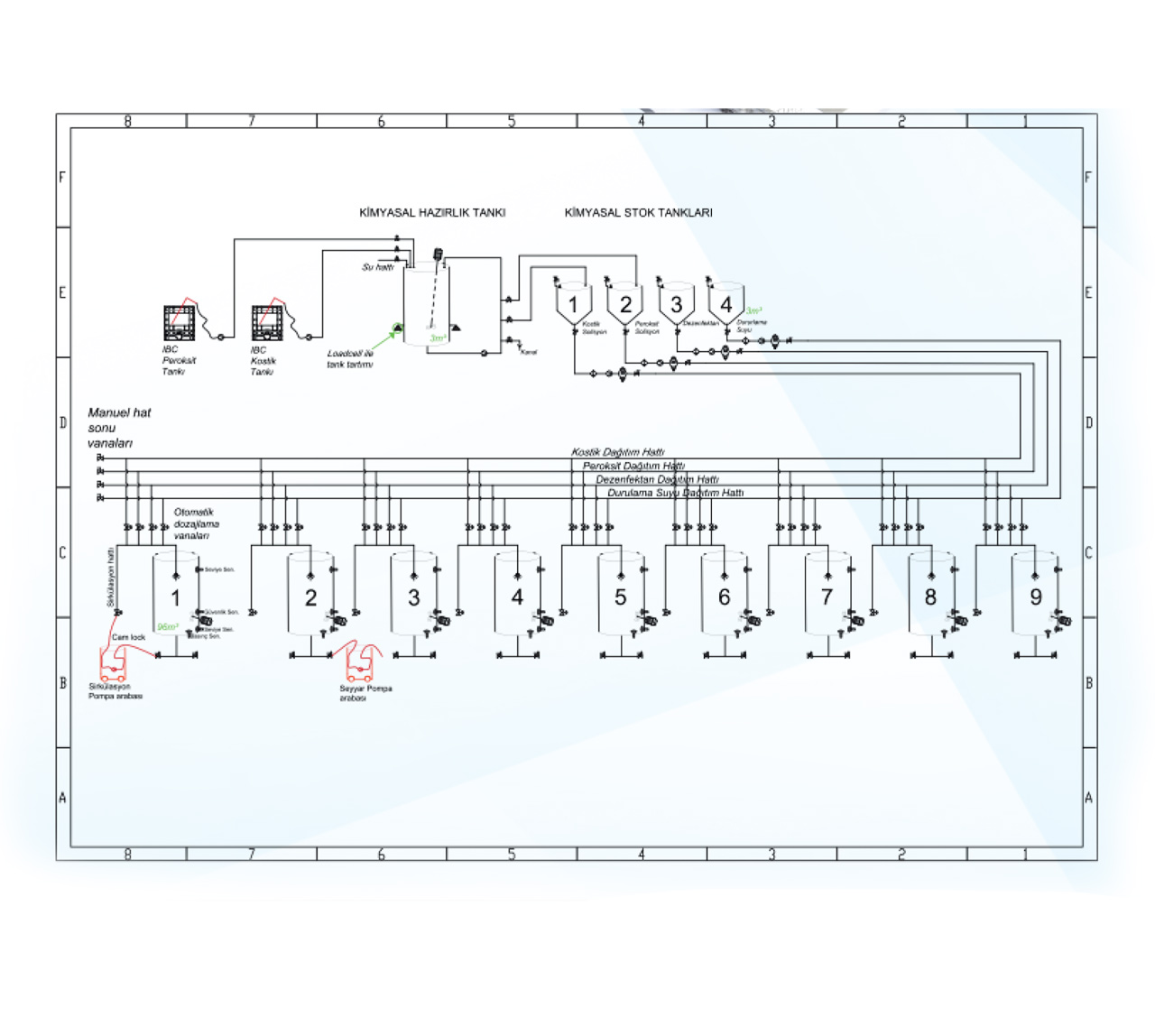CIP (Clean-in-Place) is a modern cleaning method that allows automatic cleaning and disinfection of food production lines without dismantling them. This system is widely used in the food, beverage, pharmaceutical and chemical industries where hygiene is critical. Cleaning in place increases the continuous operation of production lines and maximizes hygiene standards.
Production
» Acid - Caustic Tank
» Fresh Water Tank
» Recovery Tank
» Hot Water Tank
» Rinse Tank
» Disinfectant Tank

Purpose of CIP System
Cleaning the inner surfaces of equipment used during production (tanks, pipes, valves, etc.) and removing unwanted substances such as bacteria, sediment or chemical residue.
Increasing food safety by providing a hygienic environment.
Increasing efficiency by minimizing production downtime.
Offering an environmentally friendly approach by optimizing chemical and water consumption.

How Does a CIP System Work?
A CIP system consists of the following basic steps:
Pre-Rinse:
Large particles and residues inside the production line are cleaned with water. The system is prepared to increase the effect of the chemicals by using cold or hot water.
Detergent Wash:
Special cleaning chemicals (alkaline or acidic based) are activated. These chemicals, which dissolve oil, protein, carbohydrate or mineral residues, are circulated through the system.
Intermediate Rinse:
The system is washed with clean water to completely remove chemical residues. In this step, any remaining traces of cleaning solution are completely removed.
Sanitation:
A disinfectant is applied to kill microorganisms remaining on the surfaces. Alternatively, hot water or steam can be used.
Final Rinse:
A final rinse is performed to provide a safe and sterile environment for production. Sterile water is generally preferred for this rinse.
Dry and Prepare:
The system is dried with air and made ready for the next production.
Advantages of CIP System
Hygiene and Food Safety: Provides more effective cleaning compared to manual cleaning. Minimizes bacterial and microbial risks.
Time Saving: Cleaning is done faster since there is no need to disassemble the equipment. The production line is back in operation in a shorter time.
Resource Efficiency: Optimizes water, energy and chemical usage. Using chemicals in a recyclable manner provides an environmentally friendly process.
Automation and Traceability: CIP systems work integrated with automation, making every step of the cleaning process traceable.
Extends Equipment Life: Precise cleaning process minimizes corrosion and wear in equipment.
Areas of Use of CIP System
Food and Beverage Industry:
In milk and dairy product production (tanks, pipes, pasteurizers).
In fruit juice, wine, beer and alcoholic beverage production.
In confectionery and chocolate production lines.
Pharmaceutical Industry:
In pharmaceutical production facilities where hygiene is critical.
Chemical Industry:
In cleaning reactors and storage tanks where chemical mixtures are produced.
Petrochemical and Cosmetics:
In cleaning equipment used in the production of petroleum derivatives or cosmetic products.
